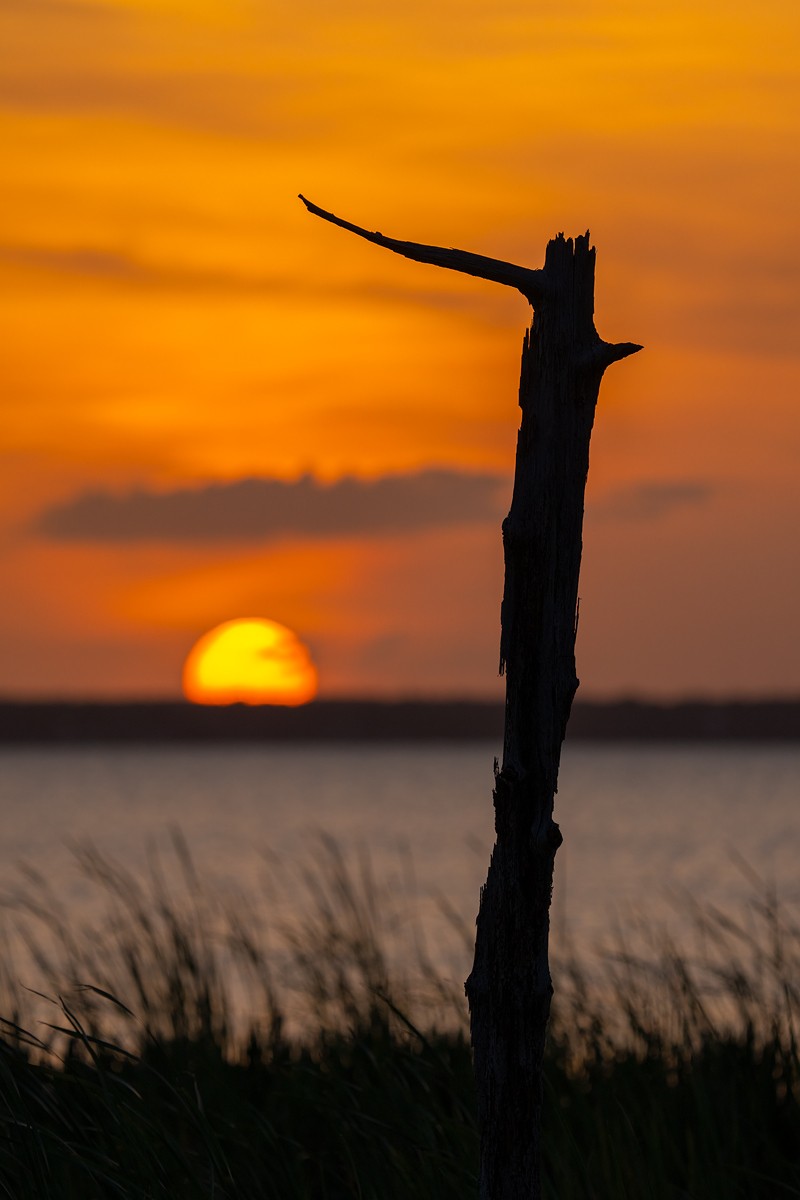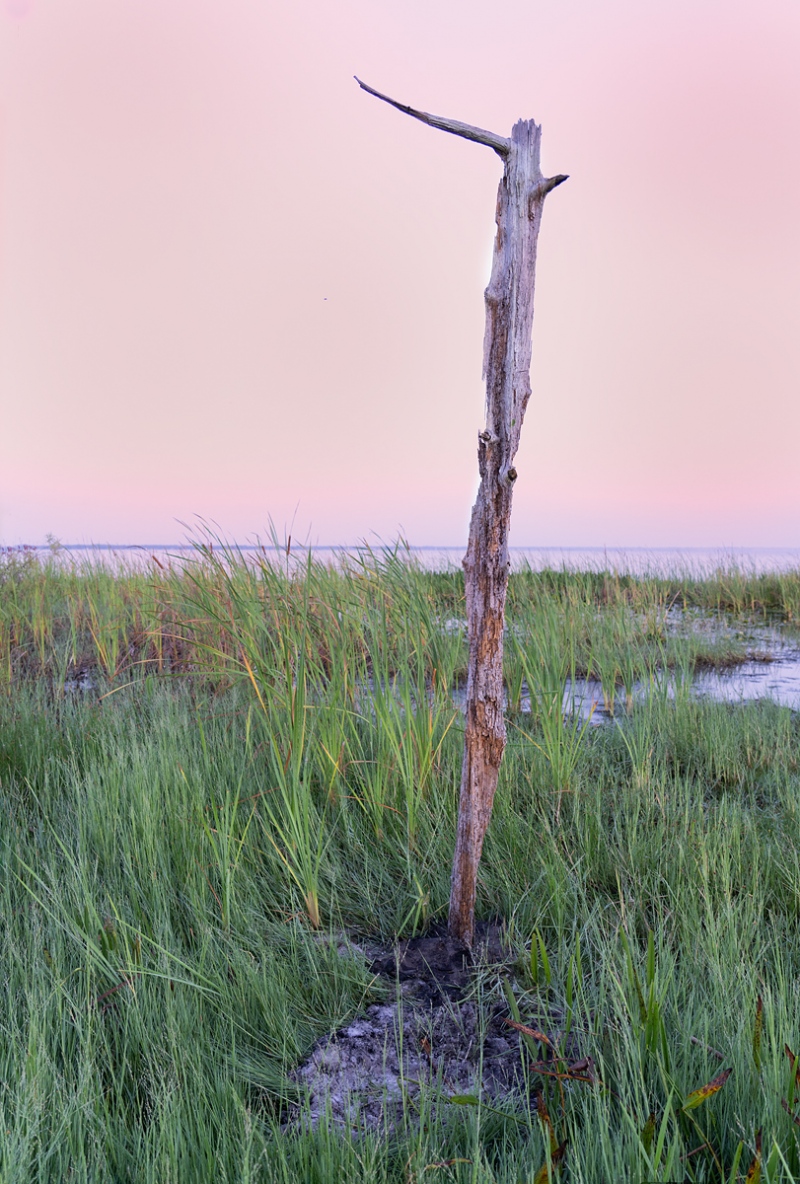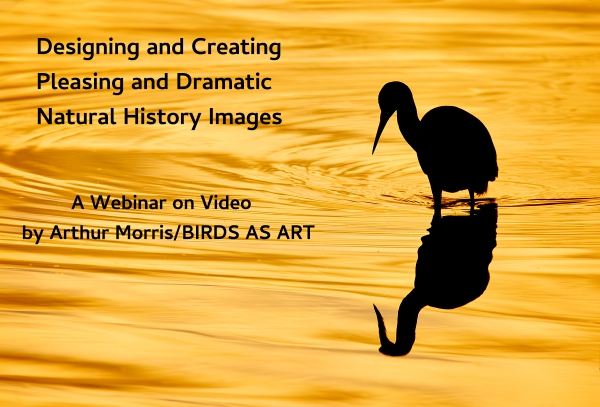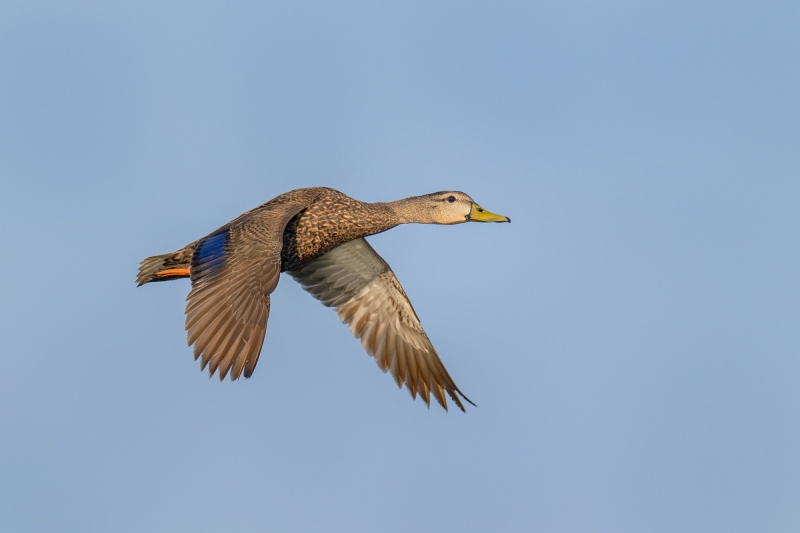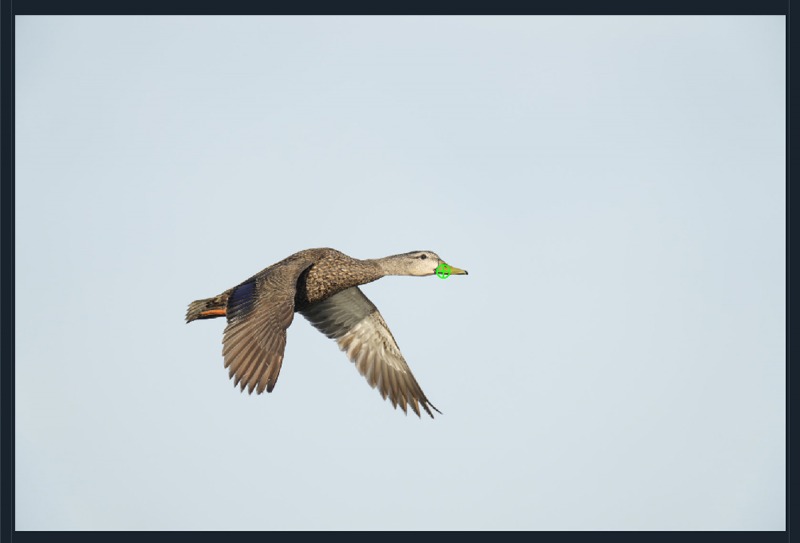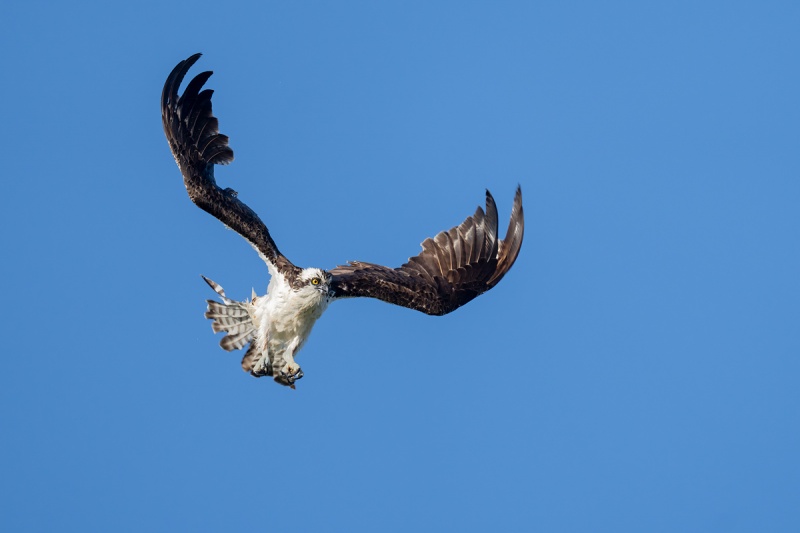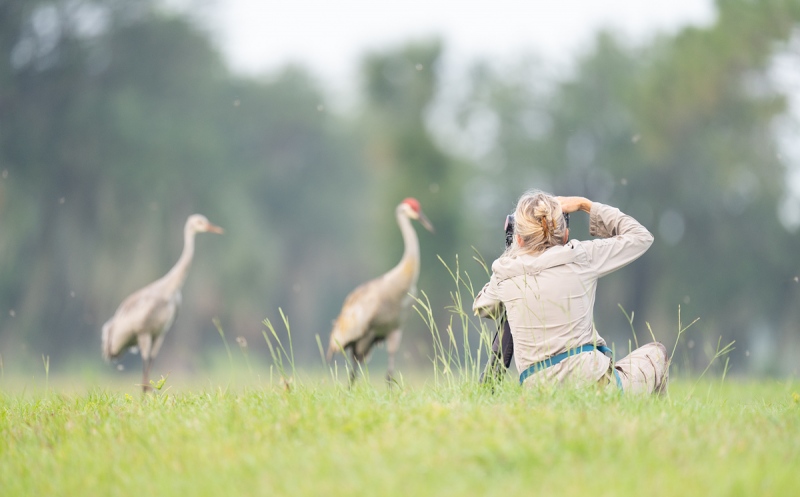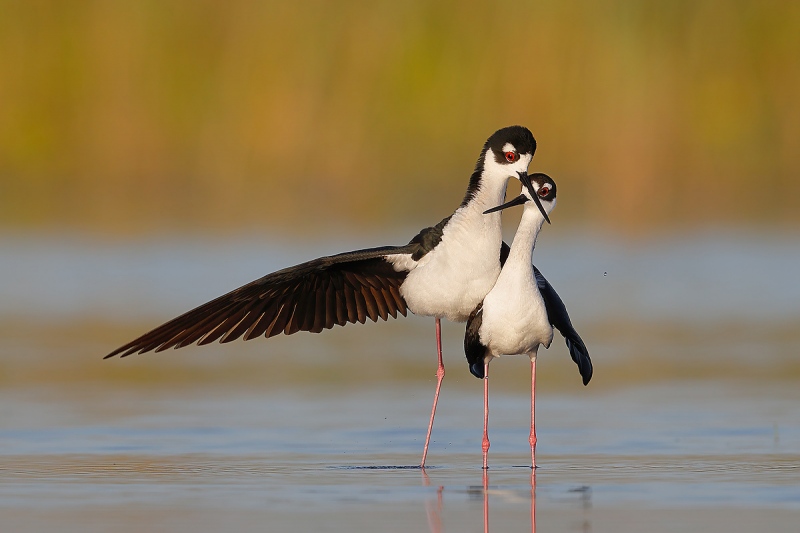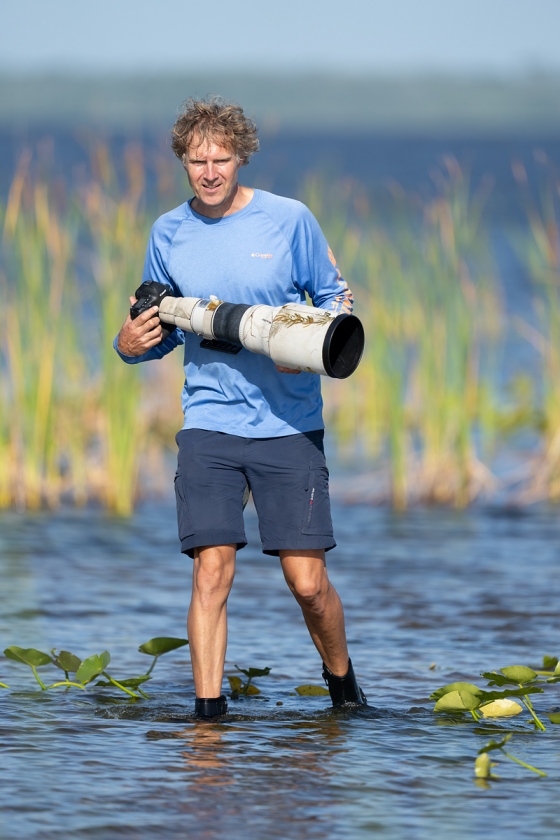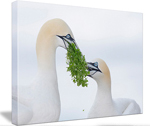May 23rd, 2021 What’s Up?
Saturday morning was gorgeous, dead clear with a gentle northeast breeze. I was set-up on the edge of the marsh by 6:45am, but the Black-necked Stilts were nowhere to be seen. None showed up, nothing flew by, and nothing swam by. At 7:15, I left to drive around. There was an Osprey atop a dead cabbage palm struggling with a big Black Crappie. As that bird is is very shy, I stayed well back. The wind was perfect. But as I placed the lens on the lowered window the bird flew off. It was gonna be one of those days …
I drove around some more with similar results. I did see all five of the young Sandhill Cranes along the lakefront, making a few images only of the half-grown colts. I headed home early and decided to go look for a new perch. Anita North and I had searched for and set up a new one last week. The very attractive top broke off as we took it out of my SUV. We thought that we had repaired it well with duct tape and wire, but by the next day the repair failed, probably startling the first Osprey that landed on it. So I decided to look for a new perch a few blocks from my house.
I was fairly deep in the woods when a friendly voice said, “Arthur, is that you?” It was my neighbor Ralph. On that day, at that minute, Ralph was the perfect person to run into. Keep reading below to learn why.
Today is Sunday 23 May 2021. I will be heading down to the lake soon no matter the weather. Wherever you are, and whatever you are doing, I hope that you have a great day.
This blog post took about 90 minutes to prepare, and makes 149 consecutive days with a new one. Please remember that if an item — a Delkin flash card, or a tripod head — for example, that is available from B&H and/or Bedfords and is also available in the BAA Online Store, it would be great if you opt to purchase from us. We will match any price. Please remember also to use my B&H affiliate links or to save 3% at Bedfords by using the BIRDSASART discount code at checkout. Doing either often earns you free guides and/or discounts. And doing so always earns my great appreciation.
ILE In-the-Field Sessions
Sandhill Crane colts and small chicks guaranteed!
Monday May 24, Tuesday May 25, or Wednesday May 26, 2021
2-hour sessions: $300.00
The crane colts family and the crane chicks family have been utterly dependable for the past few days. Join me for a morning at Indian Lake Estates with a money-back guarantee: if we do not get to photograph either the colts or the chicks at close range you will get every penny back. Also possible: Ospreys in flight and Black-necked Stilts.
Lodging and Photoshop lessons available. If you are seriously interested in joining me for one or more sessions, get in touch via e-mail or call or text me on my cell at 863-221-2372.
|
|
|
This image was created on 22 May 2021 in the marsh down by the lake at ILE. I used the hand held Sony FE 200-600mm f/5.6-6.3 G OSS lens (at 368mm) and The One, the Sony Alpha 1 Mirrorless digital camera. ISO 1000. Exposure determined via Zebras with ISO on the rear dial: 1/1250 sec. at f/6.3 (wide open) in Manual mode. The exposure was confirmed as perfect by RawDigger. AWB at 8:08pm with some haze along the western horizon.
Wide/AF-C was active at the moment of exposure and performed perfectly. Click on the image to see a version that fits in your browser window.
Image #1: The Perch II on Day One at sunset
|
The Right Man at the Right Time …
So Ralph says to me, “Whatcha doing?””Looking for the perfect perch,” I replied. We chatted for a while and an hour later, we were driving around in Ralph’s somewhat battered truck with a chain saw in the bed. We looked and looked and I explained him why each dead tree he pointed out was not the perfect perch. “You’re being quite picky, “he said. “You are correct sir.” Anyhoo, I finally spotted a dead tree that I thought would do the trick. It was tall enough –about 18 or 20 feet. It was very sturdy compared to previous perches. And the single branch at the top, on your left in the image above, seemed to be perfect for all manner of large birds like Osprey, Anhinga, and Great Blue Heron.
The first trick would be to cut the tree down without breaking off the single side-perch near the top. We came up with a plan. Ralph made the first cut from the bottom. Then he taught me to use the chain saw. I would make the top cut and Ralph, shorter, 15 years younger than me, and quite a bit stronger, would break the fall of the tree to prevent the side perch from snapping off. I had never used a chain saw before, so my goal was not to cut off a hand or part of a leg. I made the cut and withdrew the saw as the tree began to crack and fall. It was a great plan, but the tree was too large and too heavy for Ralph to manage; he lost control of it almost instantly and it crashed to the ground. We heard a loud crack, and we were both sure that the side perch had broken off. Miraculously, it had not.
After Ralph cut off the bottom four feet of the new perch, we wrestled it into the back of his truck. It probably weighed at least 80 pounds. We stopped by my house to grab a post-hole digger and by Ralph’s house to grab two five-gallon buckets. We drove to the home of a guy whose lawn Ralph mows regularly to fill the buckets with broken and smashed roof tiles. So far, so good.
Anita and I had found and set up the first The Perch about three or four years ago. The birds loved it and I shared many of the images made of birds sitting atop (and flying to and from) The Perch here on the blog. About a year and a half ago, the top cracked off. I attempted to repair it, but it was not tall enough and, as above, the repair failed. I set up several other perches fairly recently, but none of them were any good for various reasons. The trick now would be to plant the new perch successfully.
|
|
|
This image was created on 23 May 2021 in the marsh down by the lake at ILE. I used the hand held Sony FE 24-105mm f/4 lens at 24mm and The One, the Sony Alpha 1 Mirrorless digital camera. ISO 1000. Exposure determined via Zebras with ISO on the rear dial: 1/80 sec. at f/4 (wide open) in Manual mode. The exposure was confirmed as perfect by RawDigger. AWB at 6:35am in pre-dawn light.
Upper Zone/AF-C was active at the moment of exposure and performed perfectly. Click on the image to see a version that fits in your browser window.
Image #2: The Perch II on the morning of Day Two in the pre-dawn
|
Success!
I picked a spot for the new perch and started the hole with a long-handled spade as Ralph suggested. Then he took over with the post-hole digger. When Anita and I had set up the perch that failed last week, it took me about 20 minutes to dig a four-inch wide 18-inch deep hole. As The Perch II was much bigger and much heavier, we would need a much deeper and much wider hole. I volunteered to go back to the truck and grab the two buckets of rocks. When I returned five minutes later I was amazed; the hole was about eight inches wide and three feet deep! Ralph was a machine!
In short order, The Perch II was upright in the hole. We rotated it so that the side perch would be close to square with both the rising and the setting sun (as the position of the sun in the sky changed with the seasons). Then we filled in the hole with rocks, tamped them down with a shovel, and topped that off with a few shovel-fulls of dirt. Last was to pour two half-buckets of water onto the dirt and into the hole and stamp the mud down. Running into Ralph on Saturday morning was quite serendipitous as he was surely the right man for the moment. Without his help, strength, and brains, not to mention his chain saw, the Perch II would never had happened.
Ralph thinks that this perch will definitely outlast me. And I agree.
Now, it is up to the birds. I am quite optimistic, but only time will tell …
Thanks, Ralph!
|
|
Designing and Creating Pleasing and Dramatic Natural History Images
A Video Webinar: $30 by electronic download
Order your copy by clicking here.
|
Designing and Creating Pleasing and Dramatic Natural History Images
A Video Webinar
In this 1 hour 28 minute plus video you will learn and be inspired. We cover everything from the very basics to the fine points. After a brief bio, the topics include Behavior, Action, Diagonal Lines, and the Cuteness Factor; Birds in Flight — The Holy Grail of Bird Photography; Mis-Framing!; Basic Image Design/HORIZONTALS: Get the subject out of the center of the frame. Basic Image Design/VERTICALS: The center of the frame is generally fine; The Importance of BACKGROUND; Isolating the Subject; Other Elements of Composition; On Getting Low; Going Wide for Bird-scapes; Super-tight!; Working in Sunny Conditions; Working in Cloudy Conditions; Working in Foggy Conditions; Working in the Shade; Working in Bad Weather; Creating Back-lit Images; Creating Silhouettes; and Creating Pleasing Blurs.
Each segment of the program consists of an average of about 15 images that will drive home the points being made, educate you, and inspire. The instructions and advice, given clearly and concisely, are based on my near-38 years of experience photographing birds with telephoto and super-telephoto lenses. And on several decades of creating educational blog posts.
This presentation is based on the webinar that I did for the South Shore Camera Club in April. You can find some of the comments below along with comments from two of the folks who viewed the webinar the night before the DeSoto IPT began.
You can order your copy of Designing and Creating Pleasing and Dramatic Natural History Images/A Video Webinar by clicking here or by calling Jim with your credit card in hand at 863-692-0906.
Typos
With all blog posts, feel free to e-mail or to leave a comment regarding any typos or errors.
May 22nd, 2021 What’s Up?
Anita and I were down at the lake early on Friday morning. She paid a final visit to the two crane families while I worked on the Black-necked Stilts off the flattened tripod in thee inches of water. It was a still, gorgeous morning, with water like glass. The more ground level stuff I shoot, the more I become addicted to the look. There is, however, one very big negative to working at or near ground level. And that is the subject of today’s post.
Anita North should be home by now. She flew to Buffalo on Friday and got a lift from there to her home in Toronto where she will do her mandatory two-week quarantine … We had a great visit.
Today is Saturday, 22 May 2021. The forecast is for more of the same, mostly sunny skies with a gentle breeze from the northeast. You will surely be able to find me sitting on my milk crate down by the edge of the marsh. Wherever you are, and whatever you are doing, I hope that you have a great day.
This blog post took about 90 minutes to prepare and makes 149 consecutive days with a new one. Please remember that if an item — a Delkin flash card, or a tripod head — for example, that is available from B&H and/or Bedfords and is also available in the BAA Online Store, it would be great if you opt to purchase from us. We will match any price. Please remember also to use my B&H affiliate links or to save 3% at Bedfords by using the BIRDSASART discount code at checkout. Doing either often earns you free guides and/or discounts. And doing so always earns my great appreciation.
Cataract Surgery …
If you are a nature photographer who has had any experience with cataract corrective surgery, please get in touch with Joe Norton via e-mail> He would love to chat with you.
Coincidentally, I had my annual eye exam with Dr. Braunstein in Lake Wales the other day. I love the guy. He always tells me the same thing: “You have the eyes of a non-diabetic.” That of course is music to my ears. He mentioned that I did have some evidence of cataracts, but that I probably would not live long enough for them to ever be a problem. I said, “That might be good or bad …” “At least 15 years,” he said.
Please Remember
With income from IPTs now at zero, please, if you enjoy and learn from the blog, remember to use one of my two affiliate programs when purchasing new gear. Doing so just might make it possible for me to avoid having to try to get a job as a Walmart greeter and will not cost you a single penny more. And if you use Bedfords and remember to enter the BIRDSASART code at checkout, you will save 3% on every order and enjoy free second-day air shipping. In these crazy times — I am out at least forty to sixty thousand dollars so far due to COVID 19 (with lots more to come) — remembering to use my B&H link or to shop at Bedfords will help me out a ton and be greatly appreciated. Overseas folks who cannot order from the US because of import fees, duties, and taxes, are invited to help out by clicking here to leave a blog thank you gift if they see fit.
New and Better Bedfords Discount Policy!
You can now save 3% on all of your Bedfords photo gear purchases by entering the BIRDSASART coupon code at checkout. Your discount will be applied to your pre-tax total. In addition, by using the code you will get 2nd day air shipping via Fed Ex.
Grab a Nikon AF-S Teleconverter TC-14E III and save $14.99. Purchase a Canon EOS R5 and your discount will be $116.97. Purchase a Sony FE 600mm f/4 GM OSS lens and save a remarkable $389.94! Your Bedford’s purchase no longer needs to be greater than $1,000.00 for you to receive a discount. The more you spend, the more you save.
Money Saving Reminder
Many have learned that if you need a hot photo item that is out of stock at B&H and would enjoy free second-day air shipping, your best bet is to click here, place an order with Bedfords, and enter the coupon code BIRDSASART at checkout. If an item is out of stock, contact Steve Elkins via e-mail or on his cell phone at (479) 381-2592 (Central time). Be sure to mention the BIRDSASART coupon code and use it for your online order to save 3% and enjoy free 2nd-day air shipping. Steve has been great at getting folks the hot items that are out of stock at B&H and everywhere else. The wait lists at the big stores can be a year or longer for the hard to get items. Steve will surely get you your gear long before that. For the past year, he has been helping BAA Blog folks get their hands on items like the SONY a9 ii, the SONY 200-600 G OSS lens, the Canon EOS R5, the Canon RF 100-500mm lens, and the Nikon 500mm PF. Steve is personable, helpful, and eager to please.


Gear Questions and Advice
Too many folks attending BAA IPTs (remember those?) and dozens of photographers whom I see in the field and on BPN, are–out of ignorance–using the wrong gear especially when it comes to tripods and more especially, tripod heads… Please know that I am always glad to answer your gear questions via e-mail.
The Single Biggest Negative to Ground Level Shooting
The single biggest negative to working at ground level is that for 99% of folks, it is impossible to shoot flight. If you are using the tilted read screen you have zero chance. If you are lying down looking through the viewfinder you might have one chance in a thousand on a low-flying bird. Heck, make that one chance in a million. More than a decade ago I saw a nice flight image made by Long Island friend James Galletto that he made while lying prone in the mud at the East Pond at Jamaica Bay Wildlife Refuge in Queens, NY.
Thanks, Clemens!
Thanks to Clemens Van der Werf for re-acquainting me with Nik’s great Viveza plug-in. And for the tutorial session he did for Anita and me before he headed home on Thursday. I used Viveza with today’s image to transform the rather bland white sky– as seen in the screen capture below, into a fairly pleasant shade of blue. If you might be interested in purchasing a short Viveza tutorial video, please shoot me an e-mail and I will get to work.
|
|
| Image #1A: AF Point for the Mottled Duck in flight imaget
|
What Can I Say?
Well, the AF system of the a1 missed, the eye, and technically, it missed the face. But this image, and about fifteen others in the series, were laser/razor sharp on the duck’s eye. Anita liked the image so much she said, “It looks like a Sump Duck.” That is a high compliment as later winter, BPN-friend Brian Sump consistently produced spectacular images of ducks in flight, including the cover of the Canon EOS R5 Camera User’s e-Guide.
Members of the A1 Info and Updates Group learn about and receive a link to the program that enables folks to see the AF points with SONY raw files. And all receive a free copy of the Sony Camera User’s e-Guide that I did with Patrick Sparkman.
Sony Alpha a1 AF
Barring operator error, the performance of the Sony Alpha a1 AF system at any focal length — including 1200mm as seen in recent blog posts — is, when the a1 is set up properly as detailed in the in e-mails to the Sony Alpha a1 Info & Updates group, more than remarkable. Early on, there was lots of discussion within the group with many preferring multiple back button approaches. For me a simple shutter button approach with the right AF settings that yield 99% sharp-on-the-eye images is best. By far. It is super-simple and mega-effective. In the next SONY Alpha a1 Set-up and Info Group e-mail, I will be sharing what I have learned as to when and it what situations it is best to abandon Wide. And with what. The group has already learned to limit the AF Area choices and to switch AF Areas quickly and conveniently. The default method of switching AF points with the C2 button is both slow and cumbersome.
SONY Alpha a1 Set-up and Info Group
The SONY Alpha a1 Set-up and Info Group is going great guns as folks chime in with thoughtful questions and experience-based advice. We are now up to an astounding 46 lucky folks. Early on, we discussed the myriad AF options. I gave my opinion as to the best one for flight and general bird photography. More recently, we have been in contact with folks at SONY sharing our thoughts, experiences, and frustrations with the EVF blackout problem.
All who purchased their Alpha a1 bodies via a BAA affiliate link will receive a free subscription to the Sony Alpha a1 Set-Up and Info Updates after shooting me their receipts via e-mail. (Note: it may take me several days to confirm B&H orders.) This same service may be purchased by anyone with an a1 body via a $150.00 PayPal sent to birdsasart@verizon.net indicating payment for Alpha a1 Info Updates. Alternatively, folks can call Jim weekdays at 1-863-692-0906 to pay via credit card. New members will receive composite e-mails that summarize all previous discussions.
Typos
With all blog posts, feel free to e-mail or to leave a comment regarding any typos or errors.
May 21st, 2021 What’s Up?
Thursday morning was my least productive outings in many weeks. Clemens headed home after the morning shoot and Anita spent most of the day packing for her flight home today. Speaking of today, it is Friday 21 May 2021. The forecast is for partly cloudy with a brisk northeast wind. We will be heading down to the lake for Anita’s last session at least for a while. Wherever you are, and whatever you are doing, I hope that you have a great day.
This blog post took about 90 minutes to prepare and makes 148 consecutive days with a new one. Please remember that if an item — a Delkin flash card, or a tripod head — for example, that is available from B&H and/or Bedfords and is also available in the BAA Online Store, it would be great if you opt to purchase from us. We will match any price. Please remember also to use my B&H affiliate links or to save 3% at Bedfords by using the BIRDSASART discount code at checkout. Doing either often earns you free guides and/or discounts. And doing so always earns my great appreciation.
Please Remember
With income from IPTs now at zero, please, if you enjoy and learn from the blog, remember to use one of my two affiliate programs when purchasing new gear. Doing so just might make it possible for me to avoid having to try to get a job as a Walmart greeter and will not cost you a single penny more. And if you use Bedfords and remember to enter the BIRDSASART code at checkout, you will save 3% on every order and enjoy free second-day air shipping. In these crazy times — I am out at least forty to sixty thousand dollars so far due to COVID 19 (with lots more to come) — remembering to use my B&H link or to shop at Bedfords will help me out a ton and be greatly appreciated. Overseas folks who cannot order from the US because of import fees, duties, and taxes, are invited to help out by clicking here to leave a blog thank you gift if they see fit.
New and Better Bedfords Discount Policy!
You can now save 3% on all of your Bedfords photo gear purchases by entering the BIRDSASART coupon code at checkout. Your discount will be applied to your pre-tax total. In addition, by using the code you will get 2nd day air shipping via Fed Ex.
Grab a Nikon AF-S Teleconverter TC-14E III and save $14.99. Purchase a Canon EOS R5 and your discount will be $116.97. Purchase a Sony FE 600mm f/4 GM OSS lens and save a remarkable $389.94! Your Bedford’s purchase no longer needs to be greater than $1,000.00 for you to receive a discount. The more you spend, the more you save.
Money Saving Reminder
Many have learned that if you need a hot photo item that is out of stock at B&H and would enjoy free second-day air shipping, your best bet is to click here, place an order with Bedfords, and enter the coupon code BIRDSASART at checkout. If an item is out of stock, contact Steve Elkins via e-mail or on his cell phone at (479) 381-2592 (Central time). Be sure to mention the BIRDSASART coupon code and use it for your online order to save 3% and enjoy free 2nd-day air shipping. Steve has been great at getting folks the hot items that are out of stock at B&H and everywhere else. The wait lists at the big stores can be a year or longer for the hard to get items. Steve will surely get you your gear long before that. For the past year, he has been helping BAA Blog folks get their hands on items like the SONY a9 ii, the SONY 200-600 G OSS lens, the Canon EOS R5, the Canon RF 100-500mm lens, and the Nikon 500mm PF. Steve is personable, helpful, and eager to please.


Gear Questions and Advice
Too many folks attending BAA IPTs (remember those?) and dozens of photographers whom I see in the field and on BPN, are–out of ignorance–using the wrong gear especially when it comes to tripods and more especially, tripod heads… Please know that I am always glad to answer your gear questions via e-mail
|
|
|
This image was created on 19 May 2021 by Anita North. She used the hand held Sony FE 600mm f/4 GM OSS lens and The One, the Sony Alpha 1 Mirrorless digital camera. ISO 400. Exposure determined via Zebras with ISO on the rear dial: 1/2500 sec. at f/4 (wide open) in Manual mode. AWB at 8:38am on a clear, sunny morning.
Wide/AF-C was active at the moment of exposure. Click on the image to see a larger version.
Image #1: Osprey shaking off after plunge-bathing
Image courtesy of and Copyright 2021 Anita North
|
Plunge-bathing Ospreys
At ILE, in spring and summer, it is not uncommon to see Ospreys dive into four- to six-inch deep pools in the marsh, flap around, and bathe. I published one image of a plunge-bathing Osprey last year. When Anita saw this behavior, she hustled down the shoreline (leaving me in the dust) and in a few hundred yards, made this image of a bird shaking water off in flight.
|
|
|
This image was created down by the lake at ILE on 1 May 2021. I used the Induro GIT 304L/
Levered-Clamp FlexShooter Pro-mounted-Sony FE 600mm f/4 GM OSS lens and The One, the Sony Alpha 1 Mirrorless digital camera. ISO 640. Exposure determined via Zebras with ISO on the rear dial: 1/160 sec. at f/4 (wide open) in Manual mode. AWB at 7:1a6am on an overcast morning.
Tracking Expand Spot/AF-C was active at the moment of exposure. Click on the image to see a larger version.
Image #2:Anita North with the large surviving colt and one parent
|
Fitness and Bird Photography
With my 30-year tender bone on bone left knee, I take extreme care traversing the marsh. The soft muck can be four to six inches deep and if you stay out of the mud, the tall grasses and bushes can easily trip you up. Though the bugs love Anita — I am practically immune to their bites and stings, she never hesitates to get down and dirty in pursuit of a good image. The fitter you are, the more easily you are able to get in position to make a great image.
Patience and Determination and Bird Photography
On his first morning in the marsh, Anita and I both left Clemens in our favorite spot as we impatiently headed off in pursuit of more action. While we struck out, Clemens’ determination paid off in spades when our favorite pair of stilts copulated right in front of him while facing straight at him. He created more than a few family jewels from what turned out to be a fabulous sequence.
|
|
|
This image was created in the marsh down by the lake at ILE. I used the hand held Sony FE 600mm f/4 GM OSS lens and The One, the Sony Alpha 1 Mirrorless digital camera. ISO 500. Exposure determined via Zebras with ISO on the rear dial: 1/4000 sec. at f/4 (wide open) in Manual mode. AWB at 8:56am on a clear, sunny morning.
Wide/AF-C was active at the moment of exposure. Click on the image to see a larger version.
Image #4: Clemens in the marsh with the hand held Canon 600 II and the 1D X III
|
Strength and Height in Bird Photography
Strong at six foot, six inches, and after pedaling many hundreds of miles a month on his racing bike, Clemens has the physical tools that are a huge plus for anyone wishing to be a great bird, wildlife, or nature photographer. At times, his height can be a big advantage — you can always get shorter but you need a stool to get taller. On his flats boat, he often stands on the rear platform, and I have seen him get even taller by standing atop a big Yeti cooler placed on the rear platform. At times, hand holding the 600. Yikes!
Like Anita, he is driven to make great images no matter how tough the conditions. Like Anita he is quite determined. Approaching my 75th birthday I still have tons of determination — heck, that has always been number one on the list of reasons that I have enjoyed success as a bird photographer. But, I no longer have the stamina and physical tools to make like the Energizer Bunny. That said, I ain’t done yet; I can still give it a good go for a few hours. Hanging with Anita and Clemens inspires me.
|
|
Designing and Creating Pleasing and Dramatic Natural History Images
A Video Webinar: $30 by electronic download
Order your copy by clicking here.
|
Designing and Creating Pleasing and Dramatic Natural History Images
A Video Webinar
In this 1 hour 28 minute plus video you will learn and be inspired. We cover everything from the very basics to the fine points. After a brief bio, the topics include Behavior, Action, Diagonal Lines, and the Cuteness Factor; Birds in Flight — The Holy Grail of Bird Photography; Mis-Framing!; Basic Image Design/HORIZONTALS: Get the subject out of the center of the frame. Basic Image Design/VERTICALS: The center of the frame is generally fine; The Importance of BACKGROUND; Isolating the Subject; Other Elements of Composition; On Getting Low; Going Wide for Bird-scapes; Super-tight!; Working in Sunny Conditions; Working in Cloudy Conditions; Working in Foggy Conditions; Working in the Shade; Working in Bad Weather; Creating Back-lit Images; Creating Silhouettes; and Creating Pleasing Blurs.
Each segment of the program consists of an average of about 15 images that will drive home the points being made, educate you, and inspire. The instructions and advice, given clearly and concisely, are based on my near-38 years of experience photographing birds with telephoto and super-telephoto lenses. And on several decades of creating educational blog posts.
This presentation is based on the webinar that I did for the South Shore Camera Club in April. You can find some of the comments below along with comments from two of the folks who viewed the webinar the night before the DeSoto IPT began.
You can order your copy of Designing and Creating Pleasing and Dramatic Natural History Images/A Video Webinar by clicking here or by calling Jim with your credit card in hand at 863-692-0906.
Typos
With all blog posts, feel free to e-mail or to leave a comment regarding any typos or errors.
|
|

